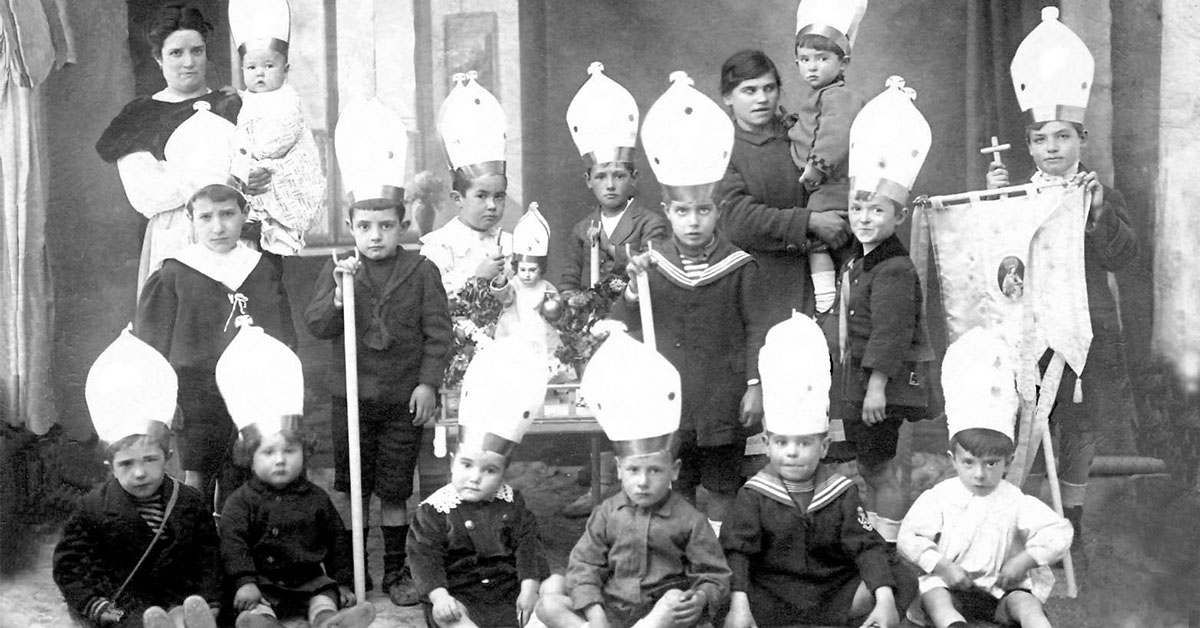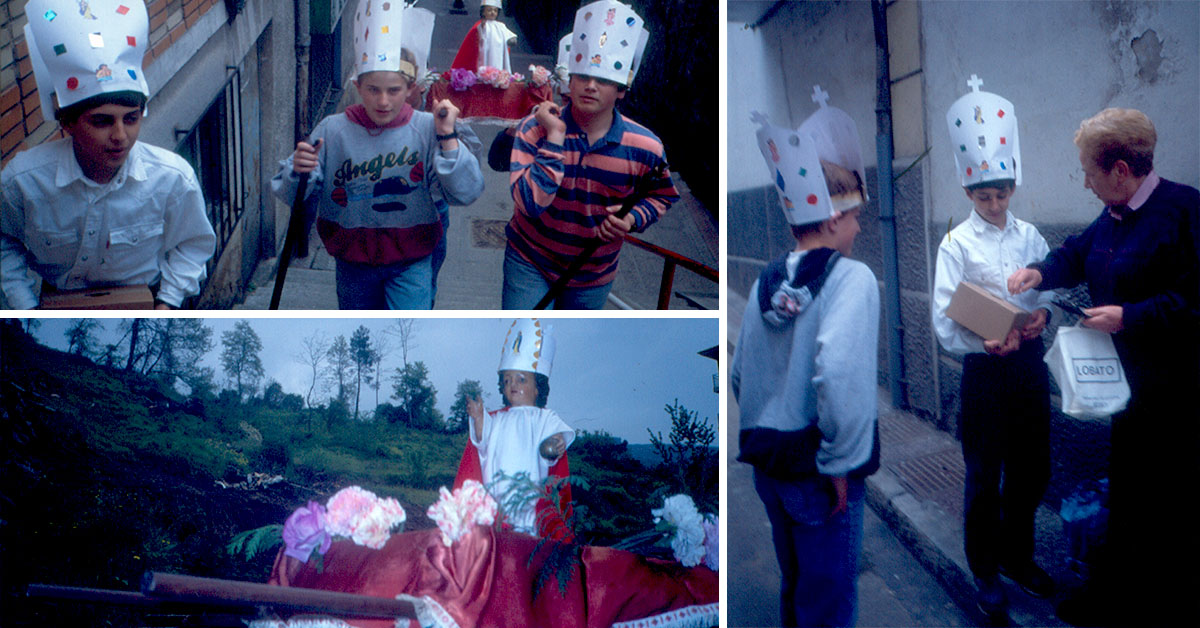Basque ethnography at a glance

Sts. Philip and James the Less (Balmaseda, between 19th and 20th centuries). Archive: Harresi Kulturala Elkartea.
Different groups of children take to the streets on May Day or the Day of the Holy Cross (3 May) to celebrate the feast of the “sanfelips” (St. Philips) in the charter town of Balmaseda. They dress in their usual clothes and wear a decorated bishop’s mitre made out of card or cardboard on their heads. As they go round the town carrying a platform with the “little angels” or “tiny saints” or a small cross adorned with a shroud, they chant a repetitive song “a cappella”, while they ask for alms. And 2023 celebrates 150 years since the first account was published about this unusual and specific custom in Los Niños. Revista de Educación y recreo (Madrid, May 1873).
The children begging for alms in Balmaseda is unparalleled in the festivities held in the immediate geographical area. However, there are similar celebrations with females (girls, young women and women) and infants (those who have not received the sacrament of the Communion) at the fore, during spring and the Rogations between the Feast of St. Mark (25 April) to the moveable feast of Ascension Day. Those celebrations combine elements from nature and the religious devotion to Mary (month of Our Lady or of the flowers) to ask her to protect and safeguard the crops growing in the fields from any possible adverse weather. The harmless begging for alms on the feast of Sts. Philips and James the Less or the Holy Cross seems to have been a traditional celebration and found in other areas of Castile. Its widespread practice in the 19th century faded away due to the possible nuisances that it used to cause or the misgivings of the secular and religious censors.
Until it disappeared in the 1970s, tradition and custom were the driving force of this celebration, endorsed and fostered by the leading role of the women (mothers, sisters, Poor Claire nuns, mentors and advocates), the excitement of the youngsters, and girls being allowed to join in the 1920s. During the 1980s, a series of individuals and authorities embarked on reviving the festivity. In the last 150 years, many changes have occurred in terms of the participants (mixed groups and other age categories), the principals in the shadow and the festive structuring, and the decorative paraphernalia (pallets for the images and their forks, banners and standards, decoration or flower arrangement, silver dishes, using bells, etc.), However, that was all symbolised in the traditional and common mitre worn by the members of the groups begging for alms as they make their way through the neighbourhoods and streets of Balmaseda.
The simple and repetitive chant or musical sequence of the different festive outings combines descriptions of the celebrations (May Day, Sts. Philip and James the Less or 3 May, the Holy Cross), religious references or to spring, directly asking for money, the children’s threats or curses if money is not given, and, even, fleeting allusions to local events. And the Basque version of the song and refrain has been added in recent years.
At the time when the tradition flourished, the groups of youngsters organised, with the help of their mothers, a snack or hot chocolate, and, otherwise, the money collected was divided among the members. Authorities and institutions now organise competitions among the different groups wandering through the town; older people recall their childhood; and the residents of Balmaseda are actively involved in this little gem of the customs of the first charter town founded in Bizkaia.
Josu Larrinaga Zugadi – Sociologist


